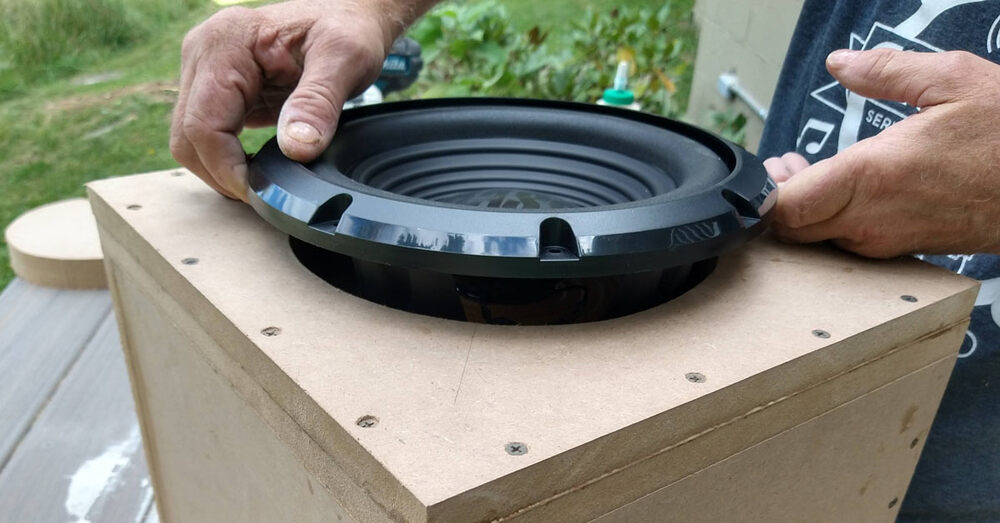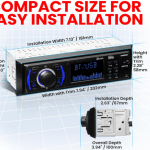When it comes to enhancing your car stereo system’s bass performance, building a subwoofer box can make a world of difference. This informative guide will walk you through the steps of creating your very own subwoofer box, optimizing it for your specific car audio needs. We’ll also address some crucial questions related to this topic, such as whether you can build a subwoofer box, the best materials to use, how to calculate the box size, and why subwoofer box size matters.
Can You Build a Box for a Subwoofer?
Absolutely! Building a subwoofer box is a practical and rewarding DIY project for car audio enthusiasts. Not only does it allow you to customize the box to your preferences and available space, but it can also save you money compared to purchasing pre-made boxes. Here are the steps to become you started:
Gather Your Tools and Materials: Before diving into the construction process, you’ll need some essential tools and materials:
- MDF (Medium-Density Fiberboard)
- Circular saw or jigsaw
- Measuring tape
- Screwdriver and screws
- Wood glue
- Subwoofer mounting hardware
- Terminal cup
- Speaker wire
- Carpet or upholstery for finishing (optional)
Design Your Box: Determine the size and shape of your subwoofer box based on your car’s available space and the subwoofer’s specifications. Keep in mind that the box’s design will impact the subwoofer’s performance.
Cut and Assemble: Use the circular saw or jigsaw to cut the MDF panels according to your design. Assemble the panels with wood glue and screws to create the box’s basic structure. Ensure that the box is airtight to prevent air leaks, which can affect the subwoofer’s performance.
Mount the Subwoofer: Install the subwoofer into the box using the provided mounting hardware. Ensure that it is securely fastened, and the cone is facing outward.
Install the Terminal Cup: Attach the terminal cup to the box, which will serve as the connection point for your amplifier and speaker wire.
Wire the Subwoofer: Connect the subwoofer to your car stereo system using the appropriate gauge speaker wire. Make sure the wiring is secure and free from any potential sources of interference.
Finish the Box (optional): To improve aesthetics, you can wrap the box with carpet or upholstery. This not only enhances the box’s appearance but also helps with sound insulation.
What Is the Best Material to Build a Subwoofer Box?
When it comes to choosing the material for your subwoofer box, Medium-Density Fiberboard (MDF) is the preferred choice for most car audio enthusiasts. Here’s why:
Density: MDF is dense and sturdy, making it ideal for constructing a rigid and airtight enclosure. Its density helps reduce vibrations and resonance, which can negatively impact sound quality.
Ease of Workability: MDF is relatively easy to cut and shape, making it accessible for DIY projects. It can be easily manipulated to fit your desired box design.
Affordability: MDF is cost-effective compared to other materials like plywood or hardwood, making it a budget-friendly option.
Consistency: Unlike natural wood, MDF has consistent properties throughout its entire sheet, ensuring uniformity in your subwoofer box construction.
While MDF is the preferred choice, it’s essential to properly seal and finish it to prevent moisture damage, which can cause the material to swell.
How Do I Calculate a Box for a Subwoofer?
Calculating the correct box size for your subwoofer is crucial to achieving optimal bass performance. Here are the steps to calculate the box size:
Gather Subwoofer Specifications: Start by collecting the following specifications from your subwoofer’s manual or manufacturer’s website:
Vas (Equivalent Air Volume)
Qts (Total Q Factor)
Fs (Resonant Frequency)
Determine Box Type: Based on your preferences and the subwoofer’s specifications, choose between a sealed or ported (vented) box. Sealed boxes provide precise and tight bass, while ported boxes offer more extended low-frequency response.
Calculate Box Volume: For a sealed box, use the following formula: Vb = Vas / ((Qts / Qtc) ^ 2)
For a ported box, use this formula: Vb = (Vas / ((Qts / Qtc) ^ 2)) * ((Fs / Fb) ^ 2)
Vb: Box volume in cubic feet
Vas: Equivalent air volume in cubic feet
Qts: Total Q Factor
Qtc: Desired Q Factor (typically 0.707 for sealed, 0.577 for ported)
Fs: Subwoofer’s resonant frequency in Hz
Fb: Box tuning frequency in Hz (for ported boxes)
Design the Box: Using the calculated box volume, design the box’s dimensions to accommodate the subwoofer and achieve the desired Qtc or Fb.
Fine-Tune and Test: After building the box, you may need to fine-tune it by adding or subtracting internal bracing or materials to achieve the exact volume and resonance you desire. Testing the subwoofer’s performance using audio measurement tools is recommended for precise adjustments.
Does Subwoofer Box Size Matter?
Absolutely, subwoofer box size plays a significant role in the overall performance of your car audio system. Here’s why it matters:
Frequency Response: The size of the box affects the subwoofer’s ability to reproduce certain frequencies. Smaller boxes may result in a tighter and more controlled bass response, while larger boxes can extend the low-frequency range but may sacrifice some precision.
Sound Quality: The box size influences the subwoofer’s Q factor and resonance frequency. Properly matched box size ensures that the subwoofer operates within its designed parameters, resulting in better sound quality.
Efficiency: A well-matched box size maximizes the subwoofer’s efficiency. This means you’ll get more output for the same amount of power, saving energy and potentially extending the subwoofer’s lifespan.
Space Constraints: Consider the accessible space in your vehicle. Smaller cars may not have the room for a large subwoofer box, making it essential to choose the right box size to fit your vehicle’s interior.
Conclusion
In conclusion, building a subwoofer box for your car stereo is not only possible but also a rewarding DIY project. By selecting the right materials, calculating the box size, and understanding the impact of size on performance, you can create a custom subwoofer box that enhances your car audio experience. So, roll up your sleeves, grab your tools, and get ready to enjoy the deep, powerful bass your car stereo deserves.









